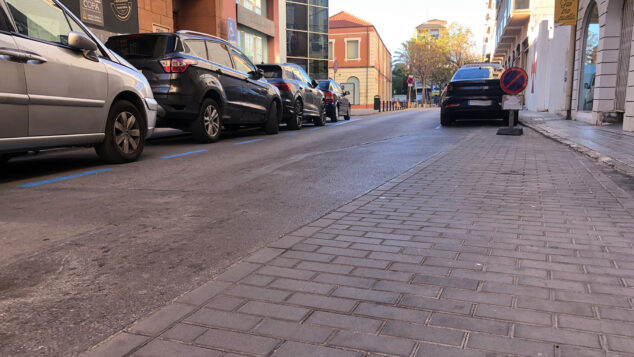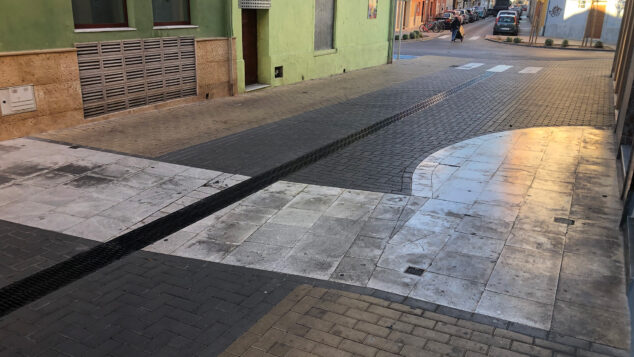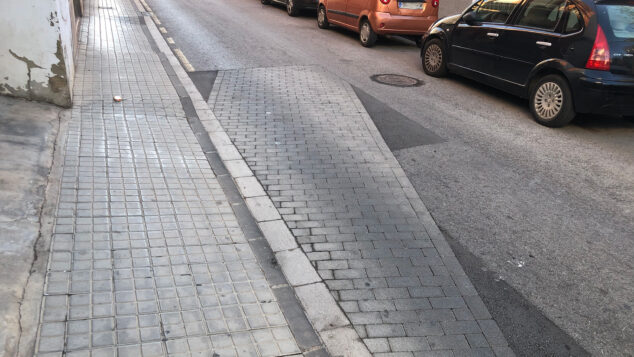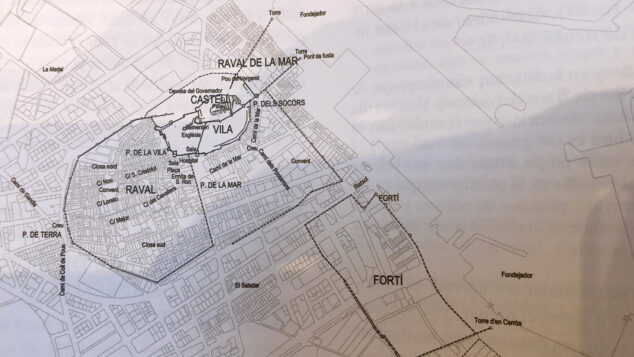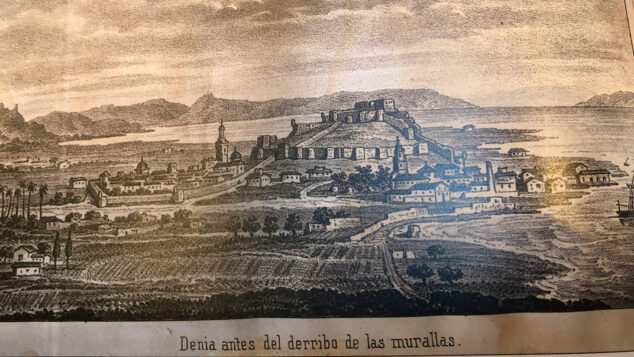For a few years now, cobblestones have appeared on several roads in Dénia that are far from the roads where they are located. It normally coincides with the completion of a work that requires lifting the asphalt, which does not explain why these specific places are detached from the placed material, showing particular geometric shapes, similar to a road, made intentionally. And the secret it hides is none other than the shadow of historical Dénia.
There are three points in the city that have these particular sections. The first to appear was on Carrer Major, almost reaching Plaza Valgamediós. During the remodeling of that road in mid-2020, it was decided to place earth-colored and gray paving stones to delimit the vehicle passage area and the strictly pedestrian area. However, in the aforementioned section a semicircular shape appears followed by a wide straight diagonal strip made of a completely different material, with a different color and that stands out visually.
The same thing appeared a few streets further down, on Carrer Montcada, as well as at the other end of Dénia, at the beginning of Carrer Colón. On these last two occasions they are what at first appear to be patches of cobblestones on a common smooth asphalt. What's behind this?
More than behind, the secret is under the asphalt. This is not a matter of any oversight or any creative touch by the teams that have worked on those roads. This is a project with which the Dénia City Council wants to bring to light part of the archaeological history of the city that had been forgotten. Underground. These are marks to mark the passage of the walls that centuries ago defended the city.
The shadow of the old walls
In the case of Columbus, the cobblestone shows the passage of the wall that protected the Islamic medina of Dénia, which was allowed to be lost after the Reconquest until its almost complete disappearance, except for some remains that withstood the passage of time a little. . After a recent work on the road, it was observed that it passed through the place, which encouraged the creation of that visible shadow on the surface.
On Montcada and Major Street the reason is the same, but what is reflected there is the most recent wall that protected the core after the castle until the 1869th century. Those walls that protected Dénia from several wars were torn down in XNUMX in order to expand the city and extend the neighborhoods beyond those physical stone borders.
They are the first, but Culture hopes to continue expanding these marks every time remains of missing walls appear below the surface, just as other cities with a lot of history do, such as Rome.

